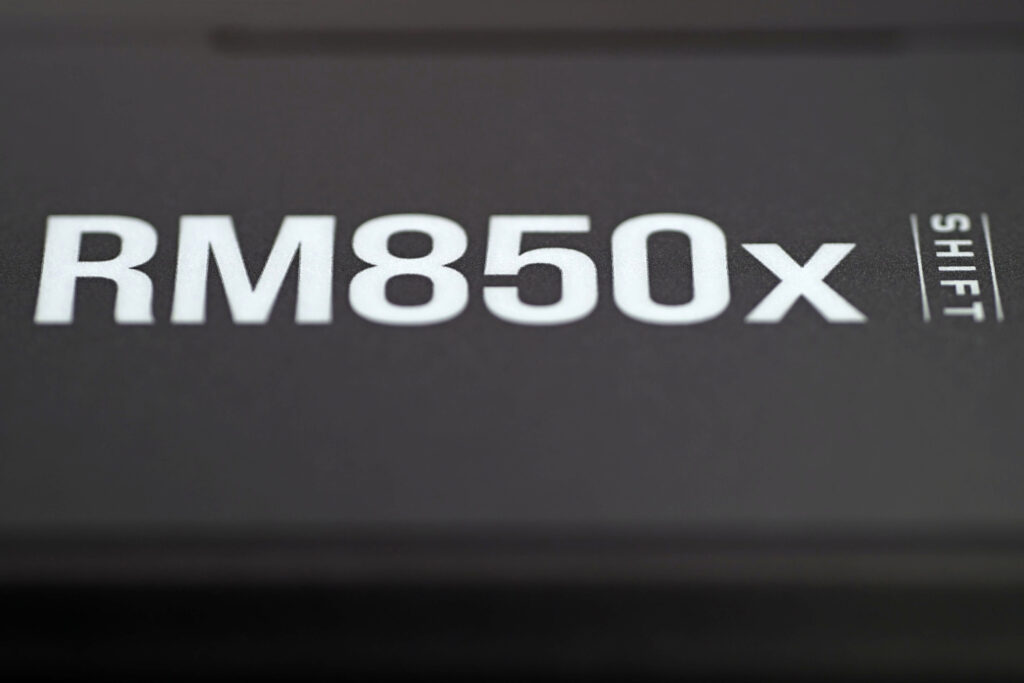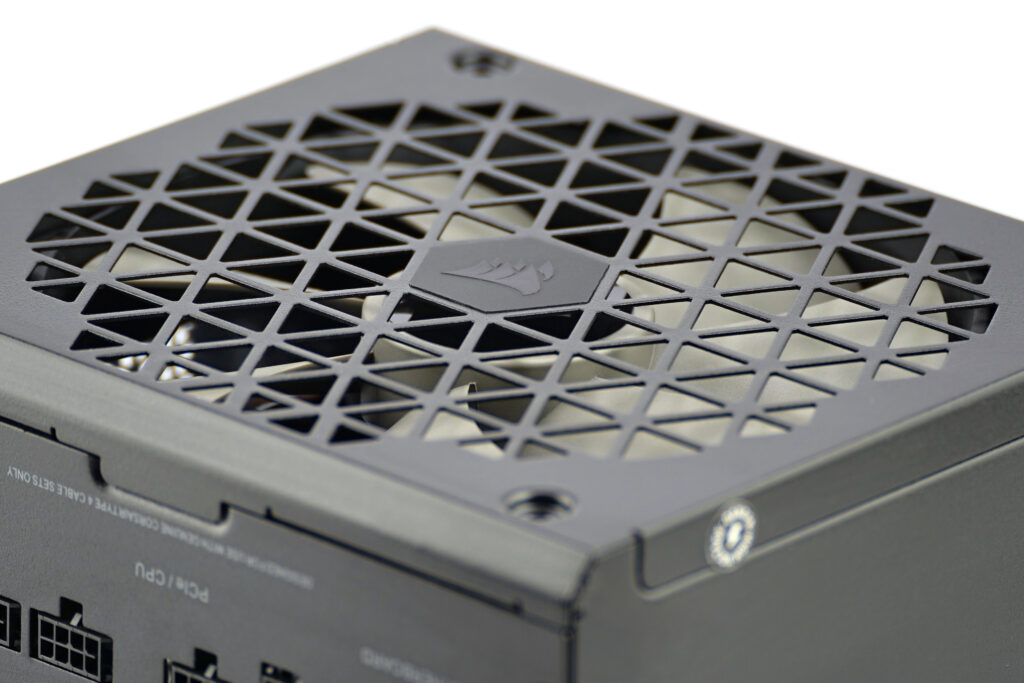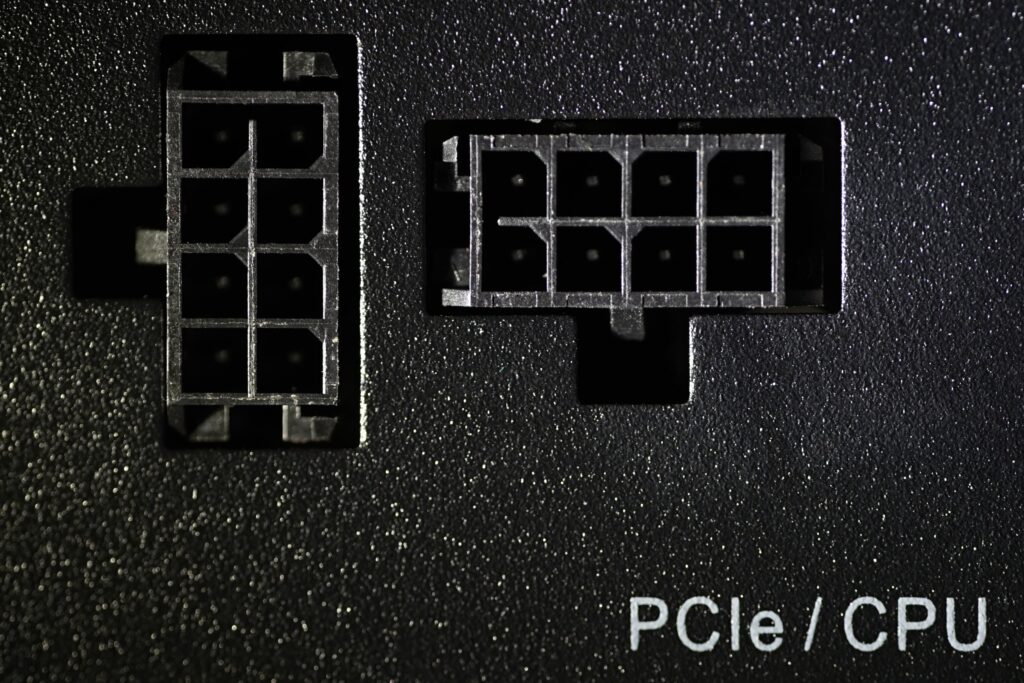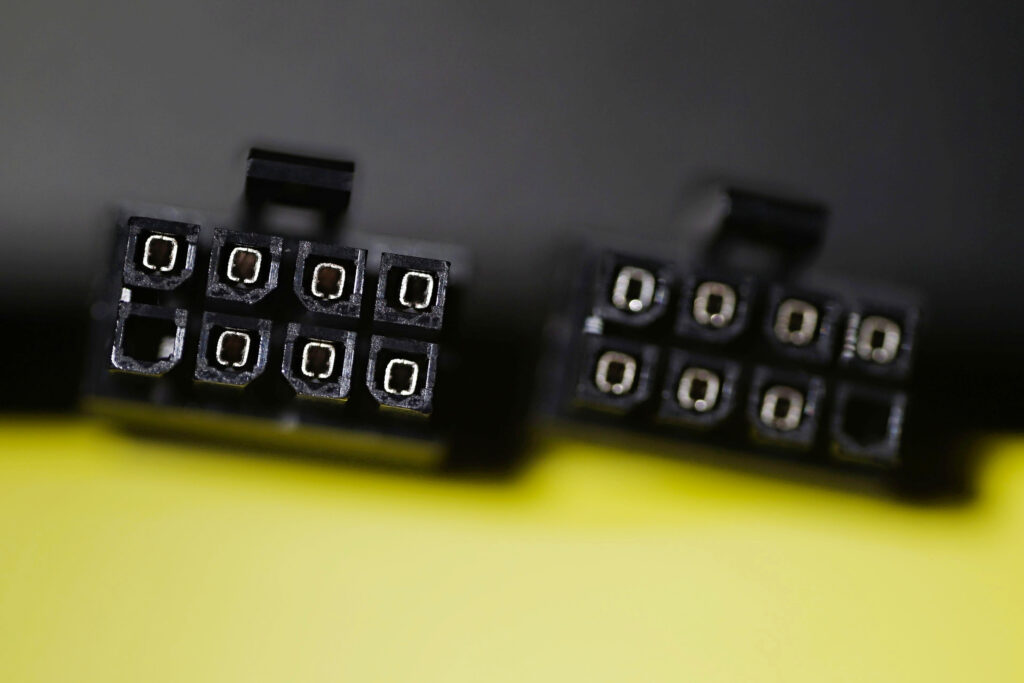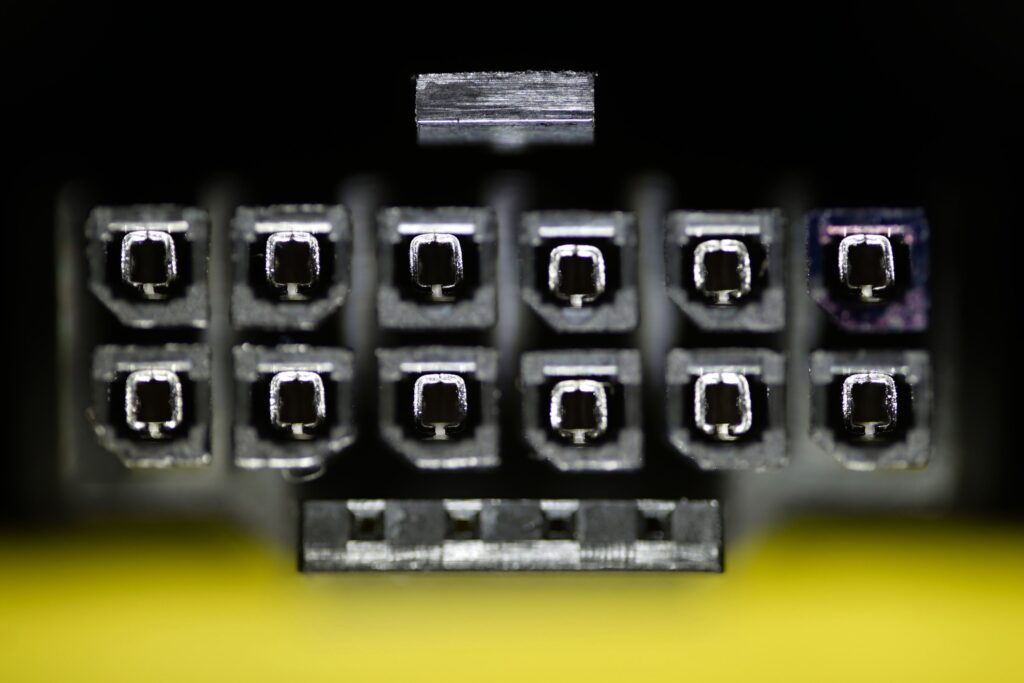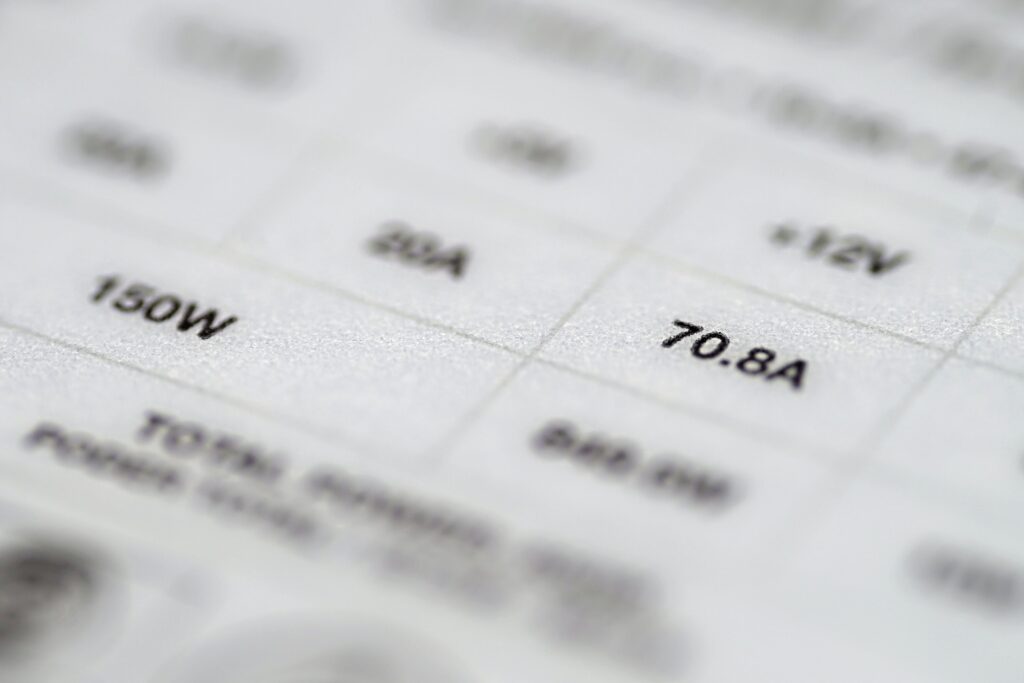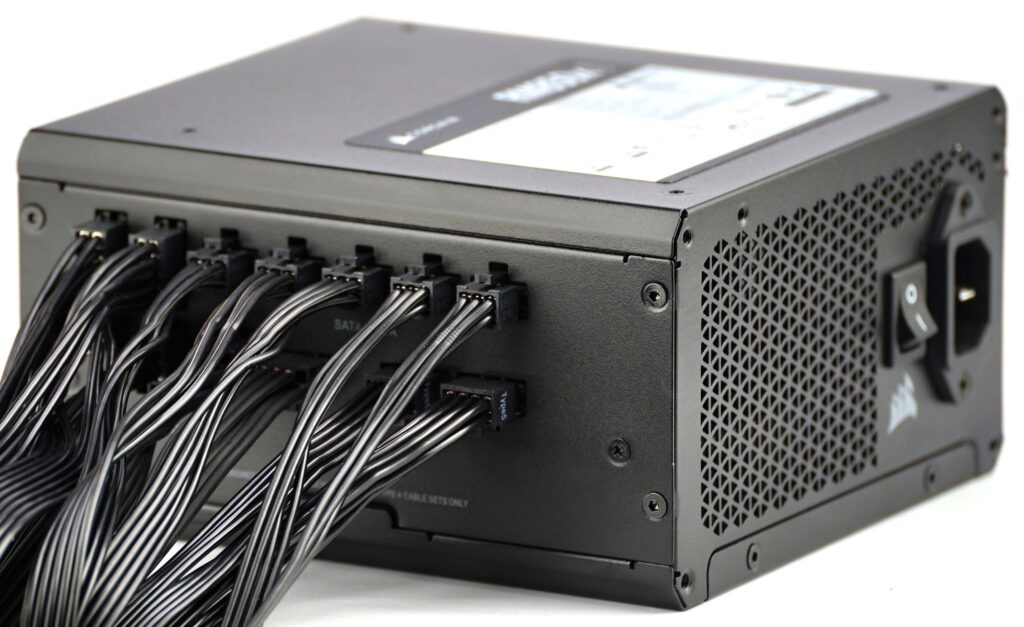The Corsair RM850x Shift PSU (850 W)
I guess it can be said that Corsair goes a bit against the mainstream in many elements with their power supplies. However, it is important to highlight the superb amount of experience of the development team, which is reflected in the design of the RM850x Shift. The use of “their own head” is often seen on the design features of this power supply, but it seems that this could only be to the benefit of things. Some without question.
From the outside…
The RMx Shift model line is the mid-range of Corsair power supplies with efficiency that is supposed to be subject to the requirements of 80 Plus Gold certification. At the same time, there is ATX 3.0 support. If you would like to know what basic requirements a power supply with this standard must meet, you can take a look at the article where we deal with this issue.
As far as the intake grille is concerned, the Corsair RMx Shift power supplies are characterized by larger triangular cutouts and a large degree of opening. This means that fan operation won’t be hindered too much, but we’ll see what effect it has on the acoustic profile.
Size-wise, as far as the length of the housing is concerned, you are dealing with a 160 mm power supply, so an average one. In most of the current cases supporting ATX power supplies, there shouldn’t be any incompatibility there, but naturally you should measure everything properly before deciding on a PSU.
The shape of the housing is different for each manufacturer, but what sets Corsair apart from competing solutions is the implementation of connectors. Specifically, the main thing that didn’t seem right to us at first as well is that only two 8-pins are used for the 16-pin connector, yet the cable (including all connectors) is capable of operating with current loads up to 58.5 A (702 W). Corsair has explained this to us in detail and it follows the logic that a single 8-pin can handle significantly more than 150W.
This “myth” is also debunked by Jon Gerow, Corsair’s head of development with a wealth of experience in PC power supply testing, on his website with a technical explanation. If you have trouble with the “ATX 3.0 ≤ 300W PCIe 5.0” sticker on the packaging, that one is out of date (you may not find it on newer packaging anymore) with Corsair’s statement: “The labeling was initially intended to comply with Nvidia’s claim on their PSU wattage vs GPU TDP statement, we thought it would make it easier for customer to choose the right wattage for their build if we spell it out the recommended spec. turned out the label made people think that the PSU was only capable of supporting up to that GPU TDP, which is false, so we decided to remove it altogether and leave the choice up to the customers.”.
As far as the 12VHPWR cable is concerned, there is the same number of wires on both sides (i.e. 6× on +12 V and 6 × GND) with traditionally above-standard gauge (16 AWG). The Micro-Fit+ connectors are brass, tin-plated, and can carry a continuous load of up to 10.1 A (60.6 A total, so with a margin over the required 55 A for the 12VHPWR or 12V-2×6), according to Corsair. To simplify, the RM850x Shift is also capable of safely powering RTX 4090 graphics cards.
When wringing the 16-pin to its maximum, it must be remembered that it is still “only” 850 W designed for a continuous current load of the 12 V rail at 70.8 A. Configurations with more powerful processors of the AMD Ryzen 9 or Intel Core i9 classes would already be over the limit at the combined load, and if the system does not exhibit instability, it will be at least in the band of declining efficiency. However, in a gaming workload where all CPUs are below 150 W (12.5 A), it won’t be so critical even with the GeForce RTX 4090.
In case Radeon won out in your choice of graphics card, the power supply is very well prepared for RX 7900 XTX models with a need for three 6+2-pin PCIe power supplies. The RM850x Shift power supply has up to four of them, and overall, it’s worth highlighting the above-standard number of cables that you can’t even plug in all at once. But you can always arrange their configuration so that nothing is ever missing. All the cables are flat, by the way, with the insulation glued wide.
Rare but useful is the side where all the connectors are brought out. Corsair has not traditionally used the back for this purpose, but the side of the power supply. The side from which you can run the cables directly behind the motherboard tray. In a normal layout, cables are threaded through the front (through grommets) to the back, but here that is eliminated, making it easier to work around cable management. Corsair thought a little differently than other manufacturers with this one too. An eventual disadvantage of such a solution may appear to be that it increases the fixed width of the power supply and in cases that have only a narrow gap in these places, it may lead to a collision of the connectors with the side panel. The connectors themselves protrude by 8.5 mm, to which the thickness of the cable bundles must be added.
In cases with the position of the power supply on top, of which there is a minimum (but there are still some…) in such a layout there is no need to thread cables from the front to the back (typically for the CPU power supply), but again you need to “tidy up” their excess length appropriately. In this layout, some cables (and again we can go back to the CPU EPS) may be slightly shorter than in the normal layout, thus causing less voltage drop on them.
… and from the inside
You can’t use a Phillips screwdriver to remove the cover, the screws have Torx T10 heads. But disassembly is otherwise very easy, also thanks to the fan cable, which does not hold the cover “short” (and is long enough). Finally, this is already a power supply where a 140mm fan (NR140P) is used as one of the few. In most PSUs (including all the models we will test that have been introduced so far), the fan size is half a number smaller. While this may not mean anything yet, fans with a larger cross-section are better positioned to achieve the same airflow at lower noise levels.
The fan is designed to switch on from 50 percent load and is promised to be extremely quiet up to 70 percent. This operation is also matched by the extra-large heatsinks on the transformers. In short, Corsair has pushed for a large area of aluminium to ensure that the lowest possible airflow is sufficient for cooling, and therefore that the power supply is as quiet as possible. At least this is how it looks.
The capacitor arrangement is of two 400-volt models (with a capacity of 470 µF) of Nippon Chemi-Con KMW on the primary filter and a mixture of smaller Nichicon models on the secondary. All are top-of-the-line, “105-degree” ones.
| Brand and model of the PSU | Basic parameters from the manufacturer | Price [eur] | ||||||||||
| Power output [W] | Continuous current load [A] | 80 Plus | Connectors | AWG | ||||||||
| +12 V | +5 V | +3.3 V | 16-pin * | 6+2-pin * | 8/4+4-pin | SATA | 4-pin Molex | |||||
| Corsair RM850x Shift | 850 | 70.8 | 20.0 | 20.0 | Gold | 1+0× | 4+0× | 2× | 12× | 8× | 18–16 | 190 |
| Cooler Master GX III Gold 850 | 850 | 70.8 | 20.0 | 20.0 | Gold | 1+0× | 3+0× | 2× | 8× | 4× | 18–16 | 170 |
| FSP Hydro G Pro ATX3.0 | 850 | 70.8 | 20.0 | 20.0 | Gold | 1+0× | 3+0× | 2× | 10× | 3× | 18–16 | 150 |
| Chieftec Polaris 3.0 (PPS-850FC) | 850 | 70.8 | 22.0 | 22.0 | Gold | 1+0× | 2+0× | 2× | 12× | 4× | 18–16 | 152 |
| Asus ROG Strix 850G Aura | 850 | 70.8 | 22.0 | 22.0 | Gold | 1+0× | 1+2× | 2× | 5× | 4× | 18–16 | 208 |
| Seasonic Vertex GX-850 | 850 | 70.0 | 20.0 | 20.0 | Gold | 1+0× | 3+0× | 2× | 8× | 3× | 18–16 | 200 |
| Enermax ERT850 EWT | 850 | 70.5 | 20.0 | 20.0 | Gold | 1+1× | 4+0× | 2× | 12× | 6× | 18–16 | 160 |
| BeQuiet! Dark Power 13 | 850 | 70.0 | 24.0 | 24.0 | Titanium | 1+0× | 4+0× | 2× | 12× | 3× | N/A | 250 |
| DeepCool PX1000G | 1000 | 83.3 | 22.0 | 22.0 | Gold | 1+0× | 3+0× | 2× | 7× | 4× | 18–16 | 180 |
| MSI MPG A850G | 850 | 70.8 | 22.0 | 22.0 | Gold | 1+0× | 4+2× | 2× | 7× | 4× | 18–16 | 169 |
* The number of PCI Express connectors is given as the sum of native and shared connectors (the second number after the “+” sign). Native connectors are those that are the same on both sides. Shared ones are then connected via different connectors on the power supply side, for example, a single 300-watt 16-pin (12VHPWR) is created by using two 6+2-pin connectors, and vice versa – a 16-pin connector can be used to connect a cable with two 6+2-pin connectors.
English translation and edit by Jozef Dudáš






